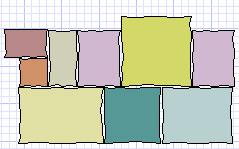Introduction:
Random layouts are incredibly useful for deceiving the eye into thinking any area is bigger or less-geometrically rigid than may actually be the case.
The term "random pattern" is an oxymoron (a layout is either random or it's a pattern, but it can't be both!), but that's the term often used for a pavement constructed from flags of variable plan sizes. The correct term, as already stated, is "Random Layouts" and they are commonly used when laying reclaimed stone paving , where it can be difficult to find two flags of the same size. However, the most popular use nowadays is to create a more authentic look for riven imported flagstones or decorative paving laid to patios. They can also be used with any range of flags that are available in two or more different sizes.
With reclaimed stone, unless you are prepared to measure and label every piece of available stone, plot the data into a CAD program and manipulate the 'pieces' jigsaw-wise, the random layout has to be created ad hoc. A good streetmason will work through a selection of flags to find the sizes required, or to trim down flags that are only slightly oversize to fit the layout being created. Newly cut stone and decorative riven paving are available in modular sizes, which allows pre-planning of the layout before work commences.
There are only two rules to follow when creating a random layout with flags. We developed these 'rules' over many years of working with natural stone paving and the concrete reproductions, and they now seem to have been adopted by the industry at large, which suggests we must have got it right!
- Never have four corners meeting
- Never have any joint running for more than about 3 metres
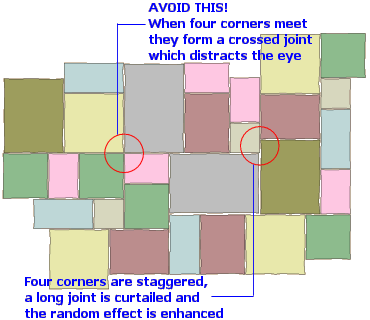
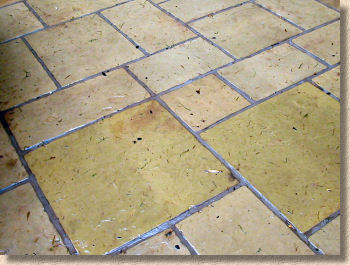
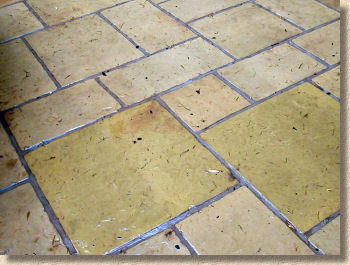
Careful study of the layouts displayed below will reveal that we have stuck to these two basic rules in draughting the plans. Sometimes, especially with the riven decoratives that come in only 5 or 6 sizes, it can be a bit of a headache working out which flag to use where without breaking the above rules, but believe us when we say that it's a lot easier to plan the layout with CAD, a graphics program or pencil and paper, than to repeatedly lift and re-lay the flags on the ground.
See below for details on draughting your own random layouts to use with the most popular riven and decorative flags.
Ready-made Layouts
Random layouts are often used for riven paving laid to patios to create a more authentic look. However, it's not a good idea to get, say, 10 of each available size in the specified range and then try to put them together jigsaw-style on site and hope it works out. A random layout needs to be calculated beforehand, so that the correct quantity of each size are ordered, and the flagger has a plan to work to.
Most manufacturers and suppliers provide suggested layouts to suit a particular range of flags they manufacture or sell. Some are interchangeable; some aren't. So we've put a few layouts for the more popular ranges below. These can be used directly or adapted to suit as required.
Layouts for other ranges, such as 3-size range or a 6-size range, are available for a small fee upon request. See Plans to Order below.
If you have a CAD program, we've also included downloads of the range sizes in dxf format, so that you can copy and manipulate the units on your own computer to suit your particular project. Alternatively, you might be able to use the scaled images in a graphics program to create your own layout.
Patterns for a 9 size range
Layouts suitable for the following popular products....
- Chancery by Marshalls
- Old Lancashire/Yorkshire by Westminster Stone
- Millstone by Stonemarket
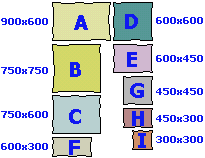
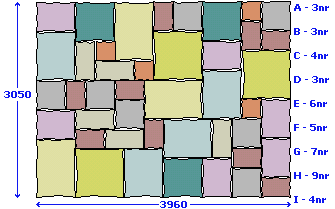
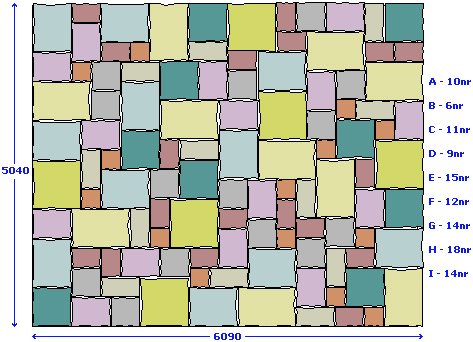
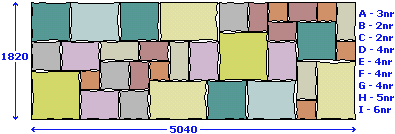
Layouts to suit a 5 size range
Layouts suitable for the following popular products....
- Heritage by Marshalls
- Milldale by Bradstone
- Yorkstone by Stonemarket
- Riven by Minster Paving

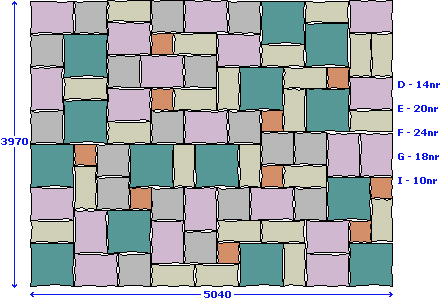
Using 5 different sizes
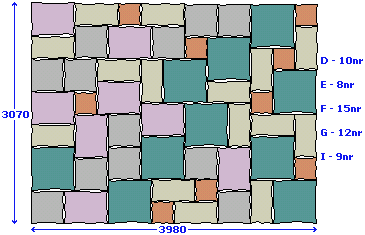
Using 5 different sizes
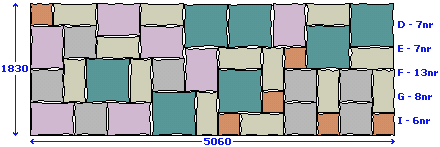
Using 5 different sizes
Creating Custom Designs
If you want to design your own layout, you can use one of the quantity calculators below to approximate the number of each size needed to cover a given area with a random layout. Note that although these calculators are fairly accurate, the exact layout you design might need a couple extra of one size and a couple less of another. Each calculator generates a good mixture of sizes, but the final layout determines the exact number required.
We use the calculators as follows....
1 - Enter area to be paved into calculator and read off quantities
2 - Using CAD system, draw the outline of the area to be paved
3 - Create suggested number of copies and arrange loosely around outline
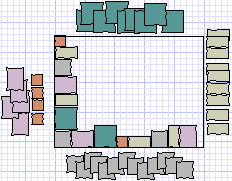
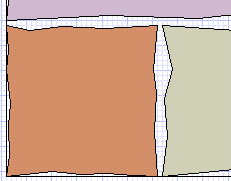
4 - Use Drag'n'Drop to arrange the copies into the outline
5 - Make copies of sizes required to finish the design and delete the leftovers
6 - Count off number of each size required and place order.
Plans to order...
In response to demand from readers of this site, custom layout plans are now available to suit any range of flags and any situation. We can create a unique layout for you, from a simple 3-size format to the more complicated 10+ size ranges. All our designs are plotted out to scale and colour coded much like the drawings above. We do all the fiddly calculations, make allowances for jointing and even supply a 'run list' detailing how many of each size are required to pave the given area.
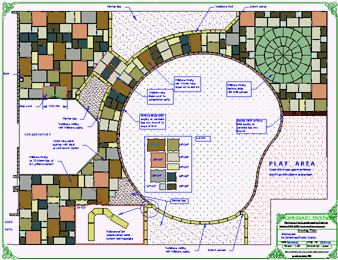
Read more about our custom design service here or use the contact form on the Design page to get in touch and we'll tell you how to proceed.
Calculators
Use these calculators to estimate the required quantity of each size of flag in a given range to give a good mix for a random layout, as described above.
We have developed similar calculators for a whole range of pavings, from 3 to 18 different sizes, for block pavers as well as flagstones. However, for commercial reasons we choose not to publish all of them but to retain some mystery regarding our craft.
It is possible to use the above principles with most graphics programs, although the accuracy will not be as good as in a CAD system, which allows precise positioning the flags so that 10-12mm joints are maintained. Alternatively, you could use pencil and squared paper, or even cut 'templates' from thin card and manipulate them to create the layout.
It should be noted that the joint width will have to vary occasionally - if one section of paving has three flags, as in the example shown opposite, there will be two joints at 10mm = 20mm, but an adjacent section might have five flags, giving an extra two joints at 10mm each to be accomodated. In this situation, the 2 x 10mm joints will be increased slightly to make sure the final alignment is satisfactory.
